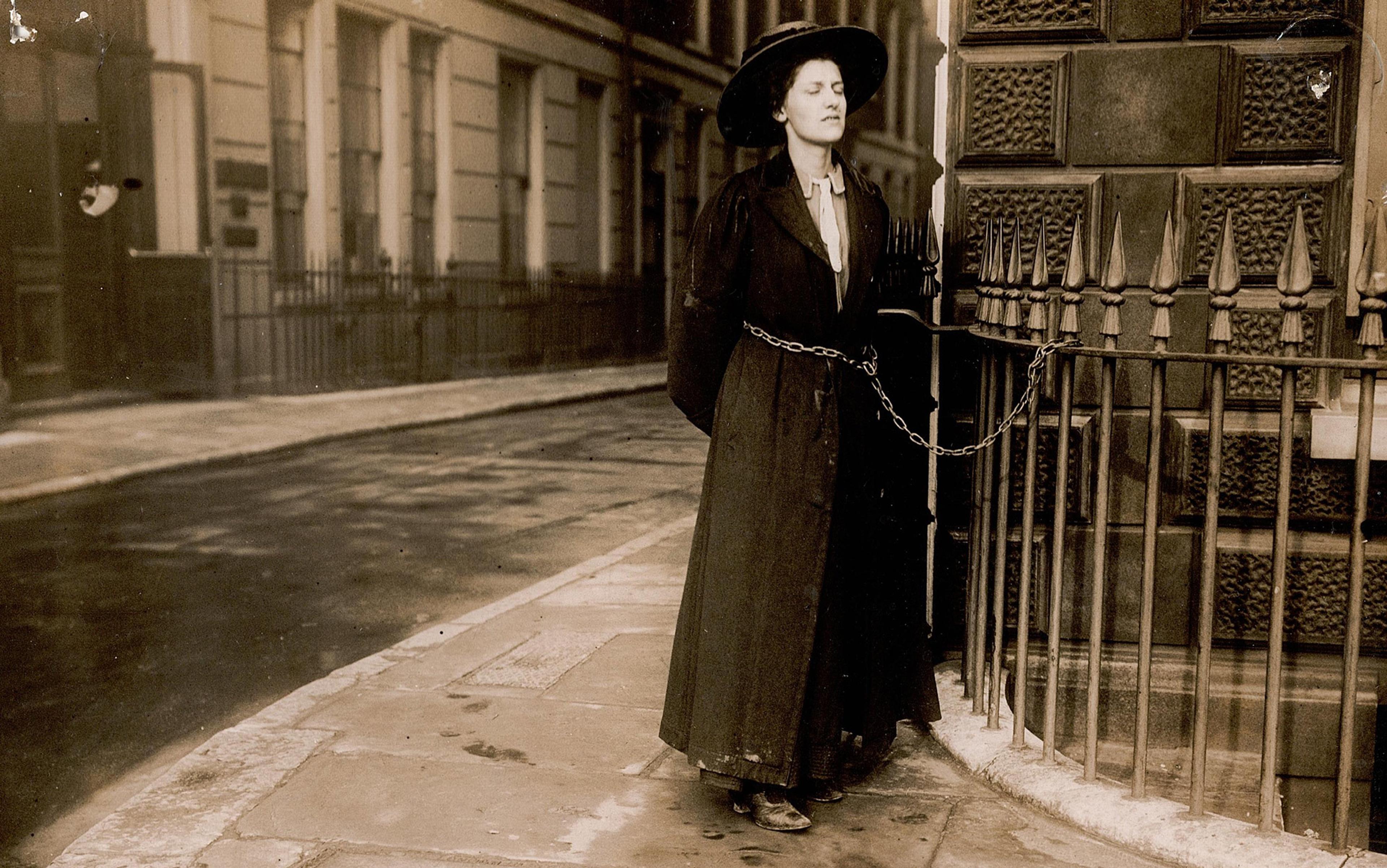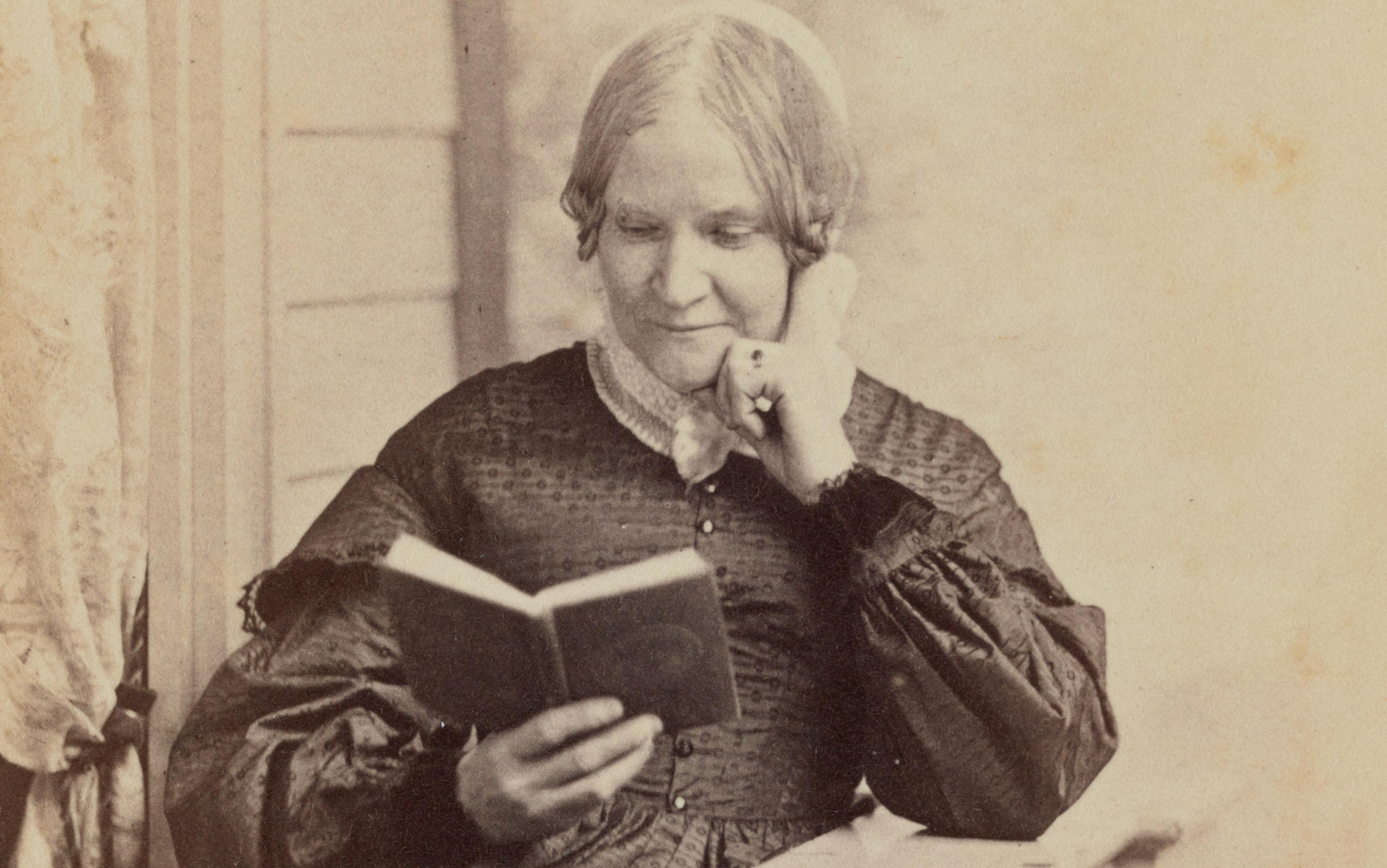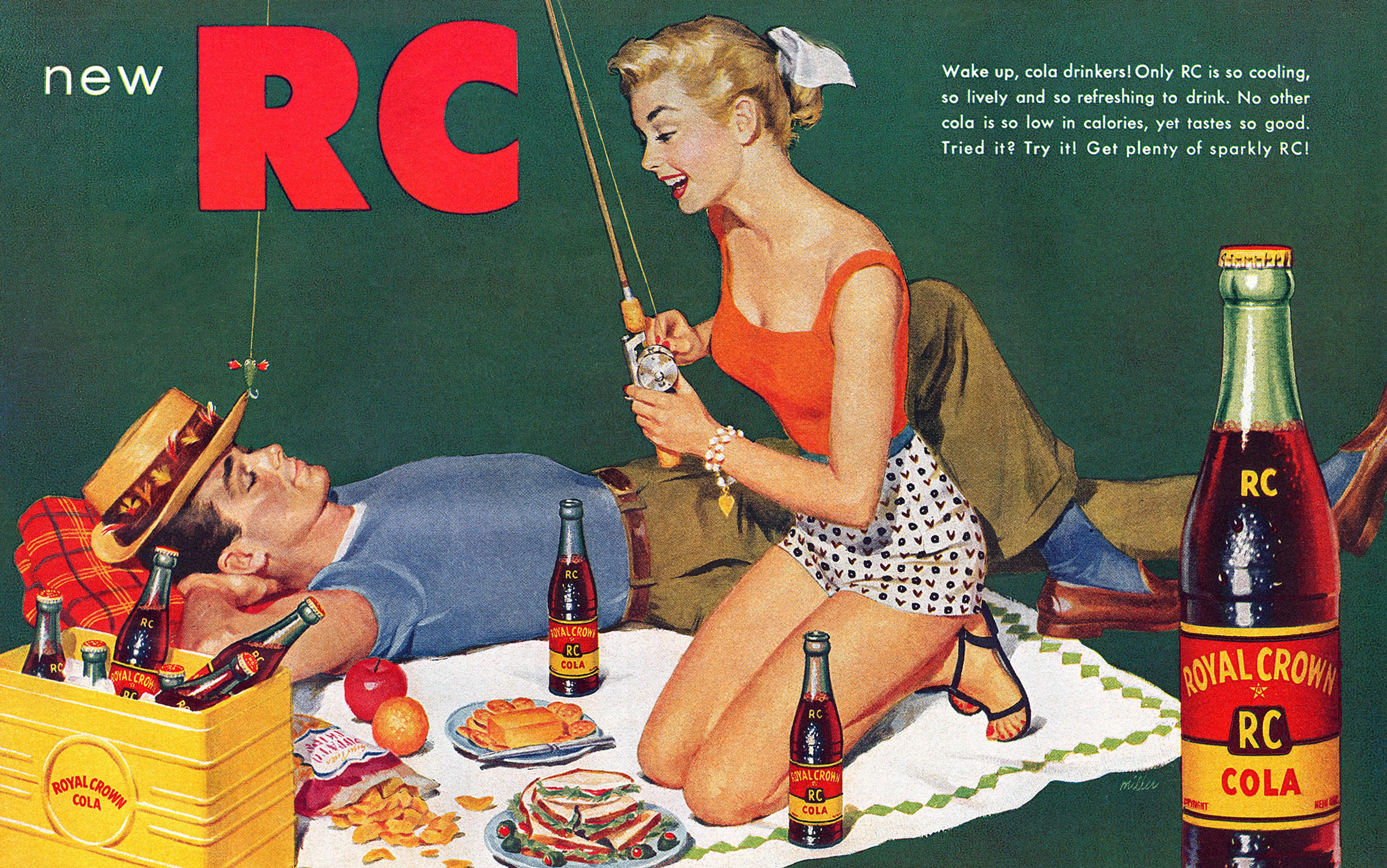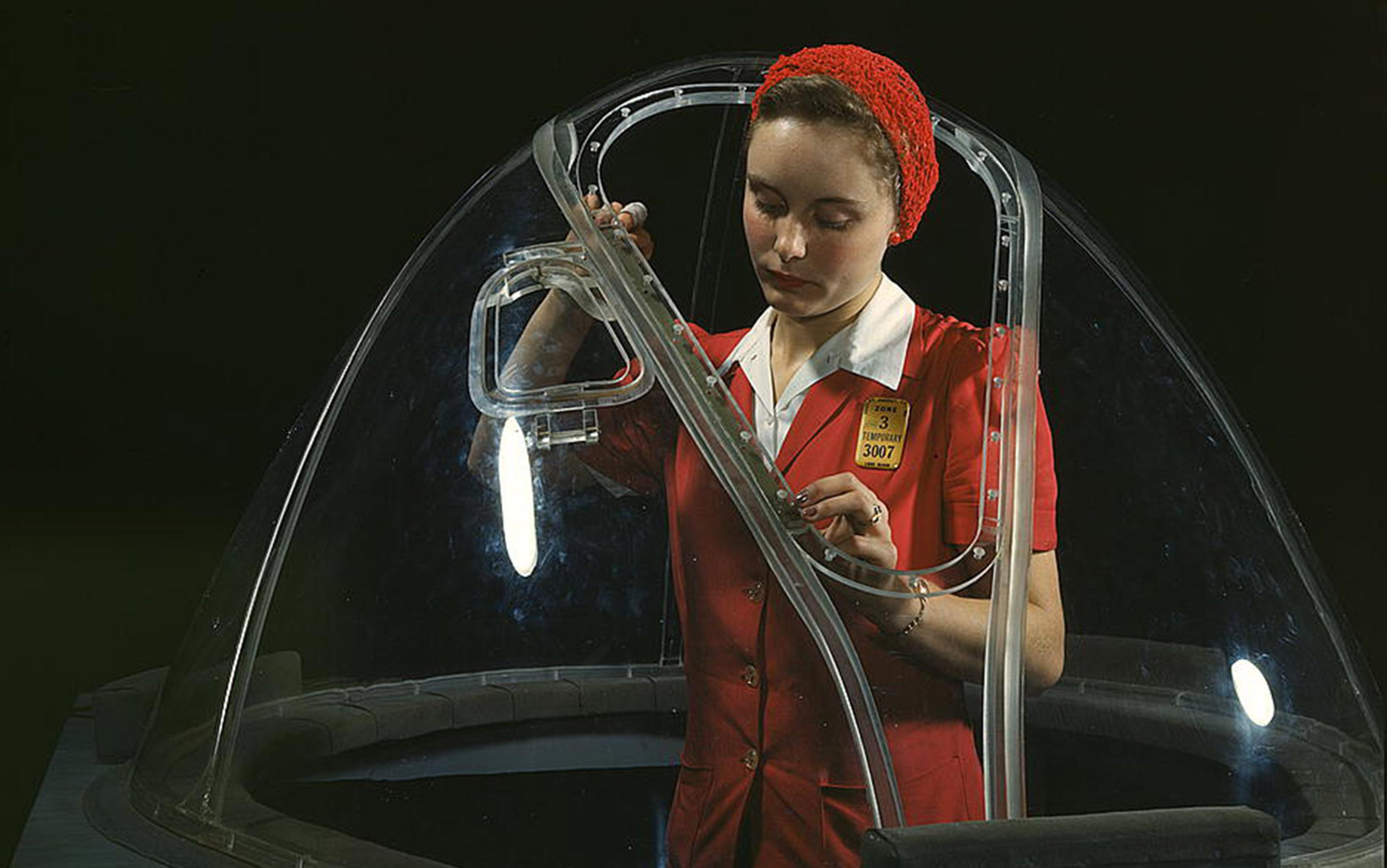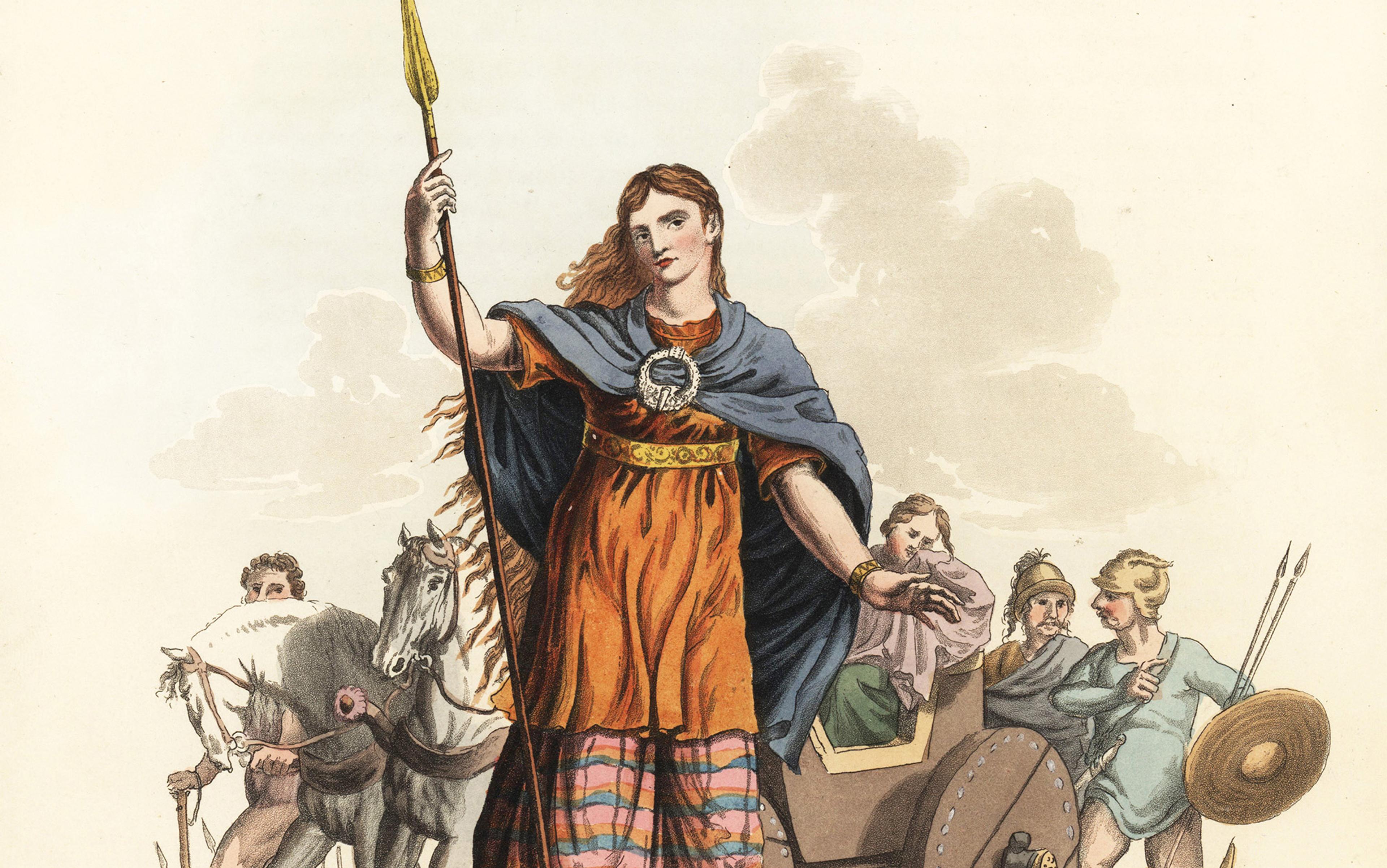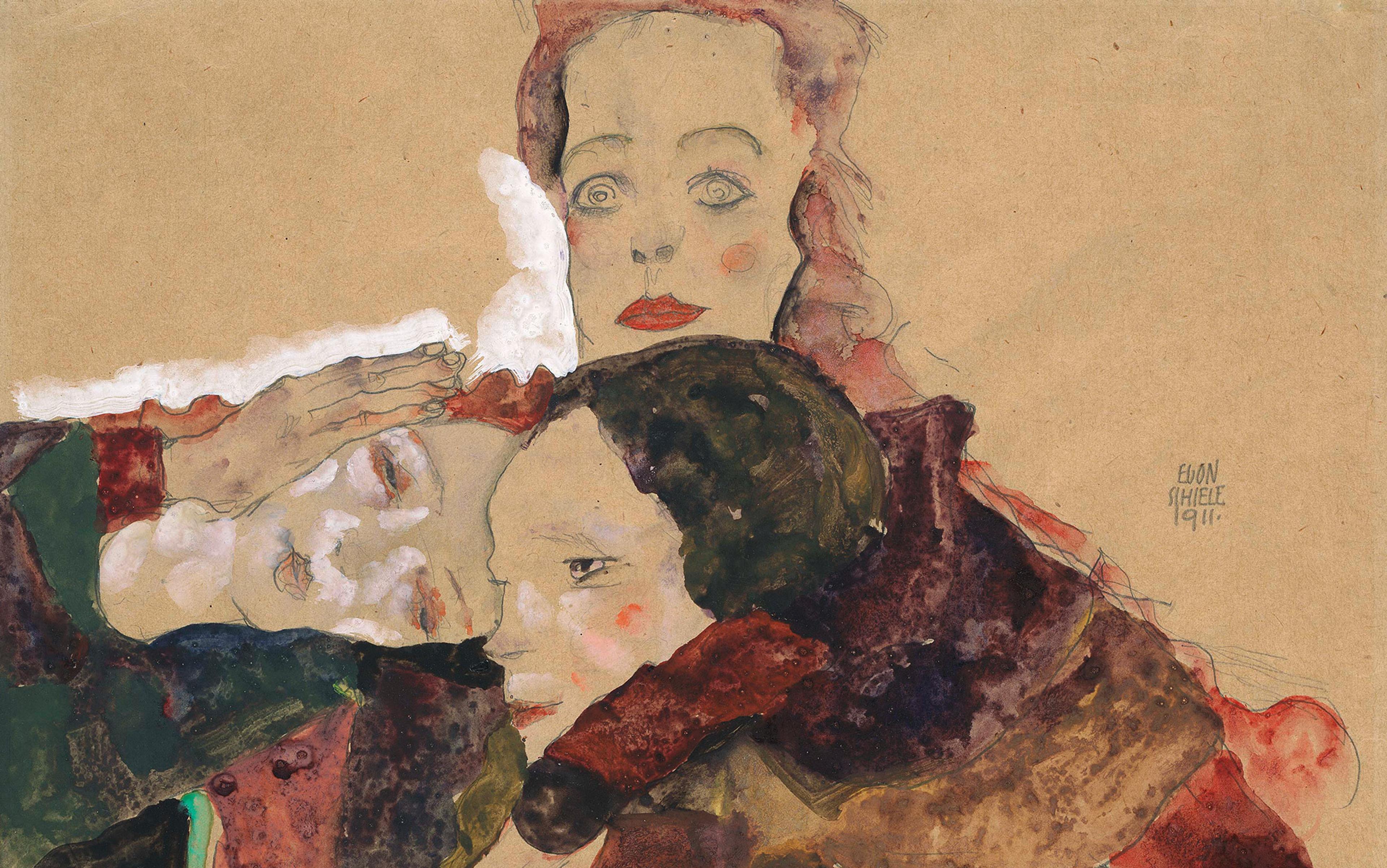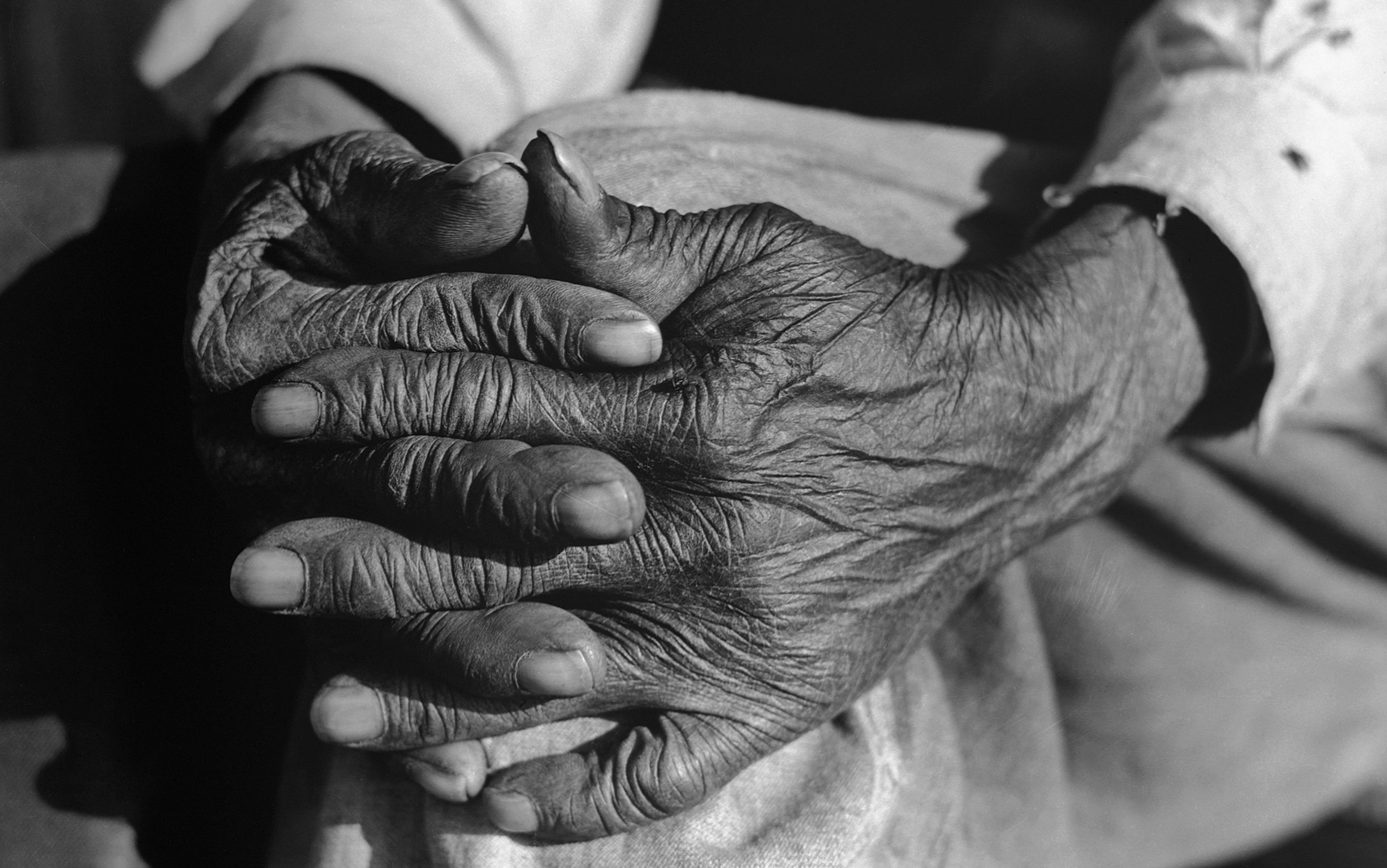We are in the midst of a global commemorative epoch. The Great War ended a century ago, an anniversary that has been widely celebrated. The centenaries of the Easter Rising and the Russian Revolution were observed in 2016 and 2017 respectively, while 2018 saw South Africa hail the 100th anniversary of Nelson Mandela’s birth. This year, Britain has observed 100 years of women’s suffrage by honouring the Representation of the People Act of 1918, while New Zealand celebrated 125 years of women’s enfranchisement. The United States will soon witness the centenary of the Nineteenth Amendment in 2020, that enfranchised most American women.
With all this commemorative fervour, social media and popular culture have become platforms that offer insight into what our feminist foremothers said to advocate for women’s enfranchisement. To celebrate the Representation of the People Act, for example, the UK bookseller Waterstones chose a historical quotation from the leader of the Women’s Social and Political Union (WSPU), Tweeting: ‘I would rather be a rebel than a slave.’ – Emmeline Pankhurst #vote100’ on 6 February 2018.
Waterstones had missed the memo. Their since-deleted Tweet quoted a slogan that had become infamous only three years earlier. Prior to the October 2015 release of Sarah Gavron’s much-anticipated film Suffragette, a regrettable photoshoot was produced with the magazine Time Out London, for which the film’s stars Carey Mulligan, Romola Garai, Anne-Marie Duff and Meryl Streep wore promotional T-shirts emblazoned with the slogan: ‘I’d rather be a rebel than a slave.’ This created a furore on social media, which then spread to various other media outlets. Why has this rallying cry become so inflammatory in the 21st century?
Suffrage histories illustrate both the best and the worst of the early 20th-century women’s movement. In today’s commemorative moment, many of us have been confronted – sometimes for the first time – with the hard, incontrovertible evidence of the racism and classism in the history of feminism. Seen from a 21st-century viewpoint, this particular Pankhurst quote is typical of much turn-of-the-century feminist rhetoric. It is illustrative of the exclusionary character of the global campaign for women’s suffrage.
In 1918, the Representation of the People Act did not, in fact, enfranchise all British women. Only those above 30 years of age who also met certain property or educational requirements were eligible to vote under this legislation. To earn the right to cast her ballot in 1918, a British woman needed to live in a home valuable enough to pay the £5 annual property tax (around £270 in 2017 figures) or be a university graduate – lofty bars by any measure, especially since few universities admitted women students at the time. It was another decade before all British women were enfranchised through the Representation of the People (Equal Franchise) Act of 1928. At the end of 2018, many Britons are likely more aware of these important nuances than they had been at the start of the year, because historians and journalists have been at pains to illustrate the minutiae of the nation’s suffrage history.
Across the world, other early suffrage legislation was characterised by even more exclusionary legislative provisions. In 1893, New Zealand became the first self-governing colony in the British empire to enfranchise all women over the age of 21. But when Australia extended the franchise in 1902, the new legislation applied only to women of European descent. A similar situation transpired in South Africa, where only white women were enfranchised in 1930. In the US, a federal suffrage amendment finally passed in 1920 but, even then, various judicial and extrajudicial methods of exclusion meant not all African-American women – or men – could exercise their right to vote. Only after the gains achieved by the civil rights movement of the 1950s and ’60s could more African Americans cast their ballot, while Australia extended the vote to indigenous people as late as 1962. Following the fall of South Africa’s apartheid regime, the country’s black people were finally enfranchised in 1994.
As noted by Mari Takayanagi, a senior archivist at the UK’s Parliamentary Archive and co-curator of the recent exhibition Voice and Vote: Women’s Place in Parliament, the realities of suffrage history make the celebration of suffrage centenaries a challenging enterprise. Since it became impolitic to describe disenfranchisement in terms of slavery only quite recently, suffrage history is littered with what now seems to be scandalous rhetoric – such as that Pankhurst quote. Countless challenges emerge when we reflect closely on exactly what was said by advocates of women’s suffrage. Some of these details are both surprising and disturbing.
Mary Wollstonecraft’s A Vindication of the Rights of Woman (1792) is a work long recognised as an early classic of feminist philosophy. Wollstonecraft argued for women’s education and opportunities in society beyond the confines of marriage; to do so, she repeatedly used analogies between slavery and the status of women. This approach might seem odd and even untenable to many of us today. Of course, previous generations often expressed their thoughts in language that can seem antiquated and inappropriate to the contemporary reader. But just as Wollstonecraft inspired many subsequent generations of women’s rights reformers, suffragists and feminists, the process of comparing women’s oppression to that of enslaved peoples is actually a form of political rhetoric that has both persisted and taken on new connotations in the centuries since.
How exactly did Wollstonecraft express these ideas in her most famous work? Women, she wrote, ‘may be convenient slaves, but slavery will have its constant effect, degrading the master and the abject dependent.’ The 18th century, we must recall, was an era that witnessed the expansion of the transatlantic slave trade. Many of her contemporaries, men such as Thomas Paine, embraced the slavery analogy to articulate the rights of man – rights that they did not necessarily view as extending to women. As the historian Moira Ferguson observes, A Vindication of the Rights of Woman made more than 80 references to slavery. This was in deep contrast to Wollstonecraft’s A Vindication of the Rights of Men (1790), which referred to slavery on only a handful of occasions. It is difficult to fully account for such a stark difference, yet this suggests that she viewed slavery as a more apt analogy for the condition of women than for the condition of humanity.
Wollstonecraft was far from alone in advocating for women’s rights using the slavery analogy. Other British women, from the 18th-century writer Mary Astell to the 19th-century abolitionist Harriet Martineau, embraced similar rhetoric. So did John Stuart Mill, a renowned British philosopher and member of parliament (MP). Alongside women such as Helen Taylor, Frances Power Cobbe, Emily Davies, Millicent Garrett Fawcett and other members of the London National Society for Women’s Suffrage, Mill and fellow MP Henry Fawcett were some of the earliest and most vocal supporters of women’s enfranchisement in Britain. Mill’s classic work The Subjection of Women (1869) – which was much influenced by conversations with Taylor – also described women’s oppression in terms of slavery. As he wrote: ‘[N]o slave is a slave to the same lengths, and in so full a sense of the word, as a wife is.’
This language gained even greater currency in the US. Chattel slavery was a far more visible institution in the new world than the old. Across the 17th and 18th centuries, the British colonies that would later become the US grew more and more reliant on the transatlantic slave trade. As part of the discontent that led to the American Revolution, British settlers – some of whom were slaveholders – described their own taxation and disenfranchisement by the British crown as a form of slavery. By the early 19th century, the northern states had begun to pursue the gradual abolition of chattel slavery. However, despite a growing antislavery movement, the institution continued to expand in the agrarian economy of the American South until the eve of the nation’s Civil War (1861-65).
Suffragists proved all too willing to descend to racist arguments in support of women’s enfranchisement
The 1830s witnessed the emergence of an antislavery movement dedicated to the immediate, rather than gradual, abolition of chattel slavery. Through a growing network of female antislavery societies, more and more American women became involved in advocating abolitionism. In the process, some articulated a sense that their own lack of legal and political rights was in some way comparable to that of enslaved people of African descent. While some historians question the degree to which this represented political rhetoric or personal epiphany, the manner in which these women expressed themselves was clear enough. For example, in her influential work Letters on the Equality of the Sexes and the Condition of Woman (1837), the abolitionist and women’s rights reformer Sarah Grimké signed each letter with: ‘Thine in the bonds of womanhood.’ Since ‘bonds’ were understood to be symbolic of chattel slavery, the historian Nancy F Cott in 1977 suggested that Grimké endowed the phrase with a double meaning: ‘womanhood bound women together even as it bound them down’.
From the 1850s onwards, women’s rights periodicals in the US were littered with examples of this kind of rhetoric. Counterintuitively perhaps, this trend actually increased after the abolition of chattel slavery in 1865. These years were defined by an impasse between social reformers: those who supported the federal government’s plan to enfranchise formerly enslaved African-American men and those who believed that women, too, should be included in these new voting provisions. Suffragists in the latter camp, including Elizabeth Cady Stanton and Susan B Anthony, proved all too willing to descend to racist arguments in support of women’s enfranchisement.
Stanton and Anthony’s radical but short-lived suffrage periodical, The Revolution, testified to the increasing racism of many white suffragists in the aftermath of the civil war. ‘Slavery is not yet abolished in the United States,’ read an article in 1870 entitled ‘The Slave-Women of America’. Although it described how all women remained disenfranchised and therefore disempowered, the article – despite its title – spoke less of those formerly enslaved women who had only recently been emancipated, and more of the nation’s free – ostensibly white – women. ‘They should no longer tamely submit to the bondage in which custom and education have for ages held them,’ the article emphasised, ‘but break off the shackles which bind them.’
This refiguring of language – from an era when ‘bonds’ had a double meaning to an era when white suffragists made attempts to co-opt such concepts for themselves alone – coincided with the emergence of Charles Darwin’s theories of evolution and natural selection. When first applied to humans by the scientist Francis Galton in the 1880s, this became known as eugenics. As the women’s suffrage movement expanded in both the US and Britain at the turn of the 20th century, earlier rhetorical ploys were repeated but now combined with eugenic imagery.
At the 1901 convention of the National American Woman Suffrage Association, for example, Laura Clay, the co-founder of the Kentucky Equal Rights Association, delivered a speech grounded in eugenicist thought. Clay believed that the ‘common stock’ could be ‘improved and invigorated by the acquired qualities of individuals, without regard to sex’, yet she suggested that social and political traditions had impeded human development on account of the ‘shackles which bound her’ – ‘her’ being the supposedly ‘universal’ woman, who most white suffragists envisioned as a middle-class white woman. ‘The world is not more called upon to rejoice in the triumphs of his genius in freedom than to mourn over the wasted possibilities of hers in bonds.’
Looking back today, it can be useful for us to think about this language as being both connected to and disconnected from ideas about chattel slavery. What is clear, however, is that generations of women’s rights reformers and suffragists developed specific imaginative and rhetorical connections to achieve certain ends, and they exploited these connections when they perceived it would be to their benefit.
Since the 1970s, historians and feminist scholars, including luminaries such as bell hooks and Angela Y Davis, have condemned the language that so many white women reformers used to express themselves. Others have criticised the racism of the suffrage movement more generally, a phenomenon connected to the white supremacist politics and science in which so many white suffragists were embroiled by the end of the 19th century.
Social reformers used the language of slavery to denounce the legal and political subjugation of women. Indeed, women had few legal and political rights or privileges before the 20th century. For women who could not vote and whose civic engagement was discouraged, it could be impossible to gain redress against violent husbands, obtain a divorce, be granted custody of children or become economically self-sufficient. The problem was that, in using such language, many women’s rights reformers and suffragists came to focus on the situation of middle-class white women alone. In doing so, many social reformers sidelined the differing situations of formerly enslaved African Americans as well as immigrant and working-class women.
This is the complex legacy with which popular culture is confronted as we commemorate suffrage centenaries. The social-media response to the marketing campaign for the film Suffragette was swift, insightful, and unforgiving. As BuzzFeed reported at the time, onlookers had been ‘upset’ by the choice of slogan on the T-shirts. Many historically astute Tweets directed attention towards the racial limits of so many of the original suffrage provisions at the same time as they criticised the film’s lack of diversity: Suffragette envisioned a cross-class suffrage movement but gave no thought to people of colour, including prominent South Asian suffragettes such as Princess Sophia Duleep Singh, who had been very active in Britain. In The Daily Telegraph, Radhika Sanghani observed how the film’s marketing campaign very clearly reflected the racism of the suffrage movement itself.
These women clearly understood associations of such words as ‘slavery’, ‘bonds’ and ‘shackles’
That marketing campaign was certainly all these things. Few, however, alluded to the far deeper historical roots of the quote ‘I’d rather be a rebel than a slave.’ The publicity developed by Time Out London in 2015, and commemoratively repeated by Waterstones in 2018, was based on a speech that Pankhurst delivered at a WSPU meeting in 1913. This speech was later published in its newspaper, The Suffragette. At this meeting, Pankhurst declared to her fellow suffragettes: ‘I would rather be a rebel than a slave. I would rather die than submit; and that is the spirit that animates this movement.’
Under Pankhurst’s leadership, the WSPU led a militant campaign for women’s voting rights in the decade prior to the First World War. These suffragettes and their contemporaries found what they saw as a relevant historical example in the idea of slavery; the metaphor could refer to ‘both the enslavement of Africans in the Americas and to the sexual enslavement of white British women’, as the historian Laura E Nym Mayhall put it. The first pages of Pankhurst’s autobiography My Own Story (1914) described the antislavery education that her parents had instilled in her since childhood: ‘Young as I was … I knew perfectly well the meaning of the words slavery and emancipation.’ This suggests that these women clearly understood the imaginative and emotional associations that could be fostered through such words as ‘slavery’, ‘bonds’ and ‘shackles’.
We might wonder how the analogy between women and enslaved people has surfaced with such force in popular culture today. But this rhetoric was not only used in the meetings of the WSPU. It was equally evident in other publications, such as the suffrage newspaper Votes for Women. In 1912, Emmeline’s daughter Christabel Pankhurst – also a leading figure in the WSPU – declared in support of suffragette militancy: ‘Woman Suffrage … is a case of one sex being held in bondage by the other sex.’ All these words and phrases were central to how the suffragettes presented themselves to the world, making it no surprise that they should reemerge in the 21st century.
One hundred years later, Suffragette cast Meryl Streep in the role of Emmeline Pankhurst. The film features her only in brief cameo, when a fictionalised Pankhurst delivers a rousing speech from a balcony to a crowd of devoted WSPU followers below. ‘We do not want to be law-breakers,’ she tells the militants gathered before her. ‘We want to be law-makers.’ The fictionalised Pankhurst then declares: ‘I would rather be a rebel than a slave!’ before being whisked away to avoid arrest and further imprisonment.
Some commentators have been reluctant to focus too closely on this phrase, which has so clearly failed the test of time. As Tiffany Thomas suggested in Bustle, we might seek inspiration in Pankhurst’s many other speeches and writings. This is certainly true: Pankhurst is a laudable figure who should be duly celebrated. Her vision and valiant leadership were crucial to the success of the suffrage movement. Her speeches and writings are no small part of this legacy.
But Pankhurst was equally a product of her time. As she reflected in her autobiography: ‘[I]f civilisation is to advance at all in the future, it must be through the help of women, women freed of their political shackles, women with full power to work their will in society.’ Pankhurst went on to attack the idea that women should endure the ‘bonds of slavery’ to maintain the veneer of respectability. Such utterances bely the idea that looking beyond an offensive quotation here and there allows us to see historical figures more clearly, for their ideas should really appear in equal parts inspiring and alien to us today. ‘If it is right for men to fight for their freedom,’ Pankhurst continued, ‘then it is right for women to fight for their freedom and the freedom of the children they bear. On this declaration of the faith the militant women of England rest their case.’
Using slavery as an analogy demeans the history and the racism experienced by people of African descent
After all British women above the age of 21 were finally enfranchised in 1928, the former suffragettes began to curate and create the historical memory of their own movement. In doing so, many attested to the significance this rhetoric held in the 1910s by embracing it as part of their legacy. For example, Christabel Pankhurst’s history of the WSPU was titled Unshackled: The Story of How We Won the Vote (1959).
The controversy that engulfed Suffragette only days before its 2015 release illustrated just how quickly one very public misstep can dominate the media coverage of a historical film. It also suggests that something has changed in present-day expectations for public discourse. The kinds of language our foremothers used to describe women’s oppression and disenfranchisement have undergone criticism to such an extent that certain modes and words are neither commonplace nor tolerated today. As more and more feminists have come to realise, using slavery as an analogy is not acceptable; it demeans the history of chattel slavery and the racism that people of African descent continue to experience. What’s more, as the historian Gerda Lerner reflected in 1979, it fails to evoke the many and varied kinds of oppression experienced by women. And yet, in spite of what might be seen as an emergent collective insight, we continue to witness the language of slavery being embraced to celebrate the heroic achievements of the suffragettes.
Our commemoration must be more judicious. We should not venerate the suffragettes’ hard-won successes by esteeming their worst oratorical moments. Interestingly, the Pankhurst quote had been just one of the film’s advertising slogans. Widely circulated posters, graced by the visages of Mulligan and Streep as well as their co-star Helena Bonham Carter, featured far more innocuous words: ‘Mothers. Daughters. Rebels.’ But neither should we cherrypick our memorialisation to the degree that we forget about the racism, classism and other shortcomings of the suffrage movement. Both approaches fail to do justice to their complex legacy. As I wrote in 2015: ‘To understand the suffragettes, we need to consider what they said and why they said it; to view them as the fallible products of their time as well as the radicals they were.’
The same must be said of their American sisters, the suffragists. As we approach the centenary of women’s enfranchisement in the US, important insights can be drawn from Emmeline Pankhurst’s legacy as it has emerged on social media and in popular culture. Arguably, white suffragists in the US embraced the language of slavery with far greater frequency and vigour than their British sisters. Ironically, theirs was a movement that actively excluded African-American women and cooperated with white supremacist politics. As we approach 2020, we must ensure justice is accorded to both their achievements and their shortcomings.
